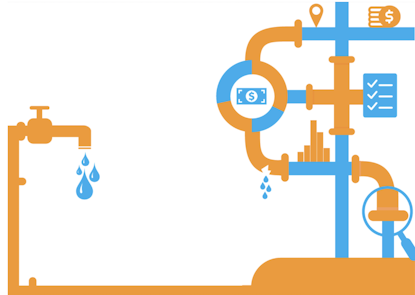To provide reliable and sustainable water and sanitation, dive into open contracting

This post was first published on Water Integrity Network’s blog.
The latest Water Integrity Global Outlook highlights how the global water and sanitation sectors are notoriously opaque and vulnerable to corruption. There are many factors at play: fragmented decision-making, technical complexities, natural monopolies, and weak regulatory oversight. Complex financial structures, involving multiple actors and funding sources, further obscure accountability and enable corruption. Yet water and sanitation investments must triple to address the urgent need for more projects, particularly as climate change-induced weather events add costs and require more resilient infrastructure to ensure safe and reliable access.
A crucial question is how to translate that finance into more effective projects and investments on the ground and prevent leakages against governance risks. We need to know where the money is being spent, on what, when, and with whom.
It’s at the level of national and local governments where, through the often technical and invisible process of public procurement, investments in water and sanitation projects translate into a critical public service to citizens. Think of water pipes, sewage treatment plants, pumping stations, chemicals for water purification, construction and maintenance of infrastructure – all of which must go through public procurement processes to keep systems running smoothly.
At the same time, with calls for resources to adapt and mitigate climate change, we need to ensure the billions that will be committed are spent where they are needed most. Yet, the report highlights that “Procurement is the site of the greatest corruption in public expenditure.” How can the sector ensure the scarce financial resources are put into most effective use through public procurement?
To do so, projects need to be implemented with an open contracting approach at its core.
- Projects should be planned with (and not just for) local decision-makers and communities.
- They must be powered by open, transparent, comprehensive real-time data on public contracts – from the spending all the way to the implementation. This is critical to identify red flags early to ensure projects are delivered effectively.
- And they need to embed local feedback, monitoring and advocacy channels throughout the project development process to learn, adapt, and create systemic change.
The following two projects provide an insight into how this can be done successfully:
Enabling local accountability through open data on public contracts
In Buenos Aires’ informal settlements, known as ‘Villas’, streets had no names, and there were no sewers, storm drains, or clean drinking water systems. Civil society organizations, particularly the Civil Association for Equality and Justice (ACIJ), and residents used access to information and open data as tools to advocate for improved access to public infrastructure services in the villas.
In one example, residents started asking questions about the construction taking place in their villa, including the new water infrastructure. They identified that the work was being carried out shoddily. Residents could then use the official data available on the public works project and their own experience to raise the problems in official forums such as the Participatory Management Council, ultimately leading to the cancellation of the contract.
Building more resilient communities
Together with Indian civic tech collective CivicDataLab, OCP is implementing open contracting strategies to improve natural disaster preparedness, response, and relief that will better protect vulnerable residents. Typically, decisions for funding allocations are based on a “first-come, first-served” approach that prioritizes those who ask for funding first.
With OCP support, CivicDataLab worked with Assam authorities to better protect vulnerable communities from extreme weather events by implementing open contracting strategies for better flood-related procurement. Core to the approach was developing a sophisticated data model to determine the most critical areas of the state needing investment – rating each district for flood proneness, preparedness and losses and combining procurement data with dozens of other datasets.
The project required working with Assam’s Finance Department to structure and standardize data on all flood-related procurement from the last five years. Now, an estimated 6.5 million people benefit from improved flood-related spending.
Results from open contracting in other contexts have delivered far-rippling effects, carrying important lessons for the water and sanitation sectors. For example, Prozorro helped reduce healthcare spending by over 18% in Ukraine. Similarly, the Colombian government achieved savings of estimated 10–15% in the provision of school meals by implementing an open contracting approach. Implementing these savings and increasing cost-efficiency could be a game changer for the underinvested water and sanitation sectors.
It’s time to dive into open contracting to improve integrity and transparency in water and sanitation sector finance!